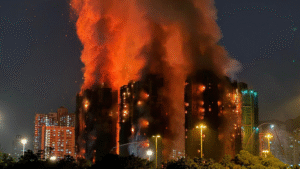The Power Purchase Adjustment Charges (PPAC) in Delhi have been significantly reduced, offering relief to the city’s residents through lower electricity bills, officials announced on Friday.
In a statement, the Delhi government described the reduction as a “new year bonanza,” ensuring decreased electricity costs for all consumers.
Chief Minister Atishi, who also oversees the power department, attributed the reduction to transparent governance and effective demand-supply management.
Previously, in September, the PPAC rates for Tata Power Delhi Distribution Limited (TPDDL) were 37.88%, for BSES Yamuna Power Limited (BYPL) 37.75%, and for BSES Rajdhani Power Limited (BRPL) 35.83%. As of December, the revised rates have dropped to 20.52% for TPDDL, 13.63% for BYPL, and 18.19% for BRPL. This reduction is expected to considerably lower monthly electricity bills.
Delhi BJP president Virendra Sachdeva called the reduction a victory for the party, crediting BJP protests and LG V.K. Saxena’s intervention for the change. He asserted that the BJP has been actively opposing the discoms and the AAP government for allegedly exploiting consumers through PPAC. Atishi, however, challenged the BJP to lower power tariffs in states under its governance if it sought credit for this achievement.
Citing the Delhi Electricity Regulatory Commission (DERC) orders, Sachdeva explained that the PPAC reductions exceeded 50%, which will lower consumer bills by 20–25%.
PPAC, an additional charge on electricity bills, compensates for increased power procurement costs due to factors like rising fuel prices or policy changes. It is calculated as a percentage of the fixed and energy charges in power bills. Mandated by the Electricity Act and other regulatory orders, PPAC ensures recovery of costs for power generators and avoids financial strain on discoms.
Officials noted that without PPAC, discoms could face liquidity challenges, hampering their ability to pay power generators. The revised charges will provide significant relief, especially for middle-class consumers, said East Delhi Resident Welfare Association Front president B.S. Vohra, who urged further reductions in electricity costs.
The reduction comes after discoms faced higher PPAC due to peak summer electricity demand and an increased reliance on expensive imported coal. By mid-October 2024, the blending ratio of imported coal returned to 4%, contributing to the decline in PPAC during the winter months.
For BRPL and BYPL, the revised PPAC is effective until December 20, 2024, allowing only the recovery of Q2 FY 2024–25 costs. TPDDL’s current PPAC remains applicable until January 31, 2025, with a new rate pending DERC approval in the coming weeks.







